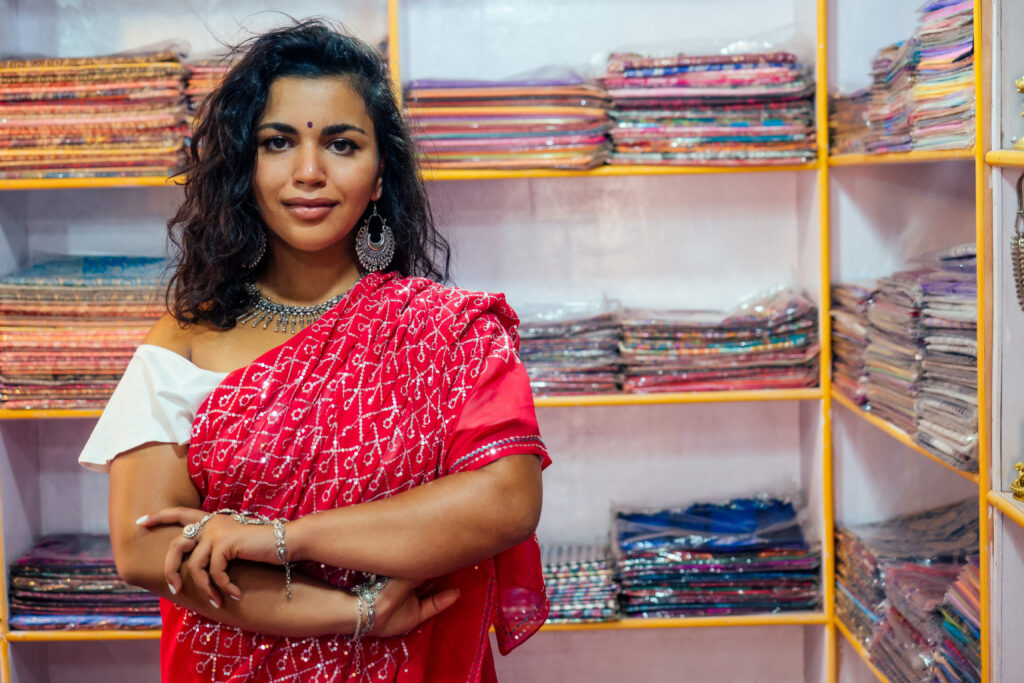
By Renee Della Ratta, Manager of Credit Underwriting
& Kathy Quintero, Portfolio Analyst
Studies have shown that women’s participation in the workforce has a profound impact on building strong communities and resilient economies. At the workplace, gender diversity on executive teams has been linked to greater innovation, profitability, and value creation. At home, agency over personal finances allow women to make important decisions about themselves and their families, such as deciding when to go see a doctor or how much money to set aside for their children’s education.
Yet, despite progress made over the years, the gender gap between male and female participation in the global economy remains broad.
A study published in the University of Chicago Press Journals found that gender gaps result in an average income loss of 15% in the OECD (40% of which is due to entrepreneurship gaps), with substantially higher losses for developing countries.1 While female-owned businesses comprise 23% of micro- small and medium enterprises (MSMEs) worldwide, they account for 32% of the approximately $5 trillion MSME funding gap.2 Furthermore, according to the World Bank, more than half of the world’s 1.7 billion unbanked adults are women.3
The global economy is missing out on huge potential.

In many emerging countries, women are often forced into entrepreneurship due to structural constraints that keep them from equal participation in the labor market or because of limited job opportunities within the formal economy. In many of these markets, Microfinance Institutions (MFIs) and other Responsible Financial Institutions (RFIs) remain one of the only lenders that cater to underbanked populations, particularly in the informal sector where women and women-owned enterprises are disproportionately represented.
A Foundation Built on Inclusion
Since inception, MicroVest has made a concerted effort to target two of the key themes in Gender Lens Investing (GLI): 1) investing in products and services targeted to women (group micro-loans) and 2) increasing capital allocation to women.
To better understand and assess gender parity throughout our portfolio, MicroVest also integrates gender inclusive metrics into its investment process and portfolio construction efforts. We seek to invest in institutions that are committed to improving women’s economic empowerment. In an effort to measure a portfolio company’s emphasis on gender equity in the workplace and in its customer reach, MicroVest collects and tracks data on the composition of an RFI’s board members, female senior management, and female borrowers for gender inclusivity. A gender smart approach, especially when it includes women in senior leadership roles, helps firms become more productive and innovative while creating workplaces that attract and retain high quality employees. We believe that this ultimately shows up in key traditional measures of financial success like revenue growth and profitability. As of June 30, 2020, women represented 56% of the borrowers among our portfolio of RFIs, and 25% and 16% of our RFIs’ senior management team and Board. MicroVest’s portfolio is also consistent with the G7 Development Finance Institutions (DFIs) 2X Challenge: Financing for Women criteria for Leadership and Consumption, with a portfolio share of female representation on senior management at above 20% and products or services benefiting women. While microfinance institutions continue to have a greater representation of female borrowers than SME banks, we continue to work proactively to identify more female led firms.

Reading the Horizon
At MicroVest, we continue to work on ways to uncover opportunities that meaningfully move the needle on women’s access to finance, which includes, among other things, delivering innovative products through low cost, digital distribution channels.
First, by using our expertise as intermediaries, novel investment vehicles prioritizing gender inclusion can more easily connect investors with a gender-focused mandate to women borrowers and women-owned enterprises. Our funding can be ear-marked to support new GLI products specifically designed to increase women’s access to financing. To help these types of products build a track record, blended investment vehicle structures that utilize first-loss guarantees could catalyze the entry of additional private investors into the impact space.
Second, fintech innovations are providing an array of solutions to barriers constraining women’s access to financing. Today fintech lending platforms are making credit decisions based on mobile phone data instead of traditional credit metrics, which can favor men. If properly developed, algorithms can make credit decisions that eliminate the implicit bias inherent in any human-facing credit approval process. Digital origination solutions have also eliminated the physical barriers of travel for many women.
Social norms on gender are evolving across the globe. The time is ripe to narrow the gender gap even more until we can achieve near total gender equality. At MicroVest, we are committed to investing in impact by measuring and adapting our policies and processes to support gender parity in the years to come.
1The University of Chicago Press Journals; Aggregate Effects of Gender Gaps in the Labor Market: A Quantitative Estimate; David Cuberes and Marc Teignier
2SME Finance Forum, MSME Finance Gap https://www.smefinanceforum.org/data-sites/msme-finance-gap
3World Bank Global Findex (2017)